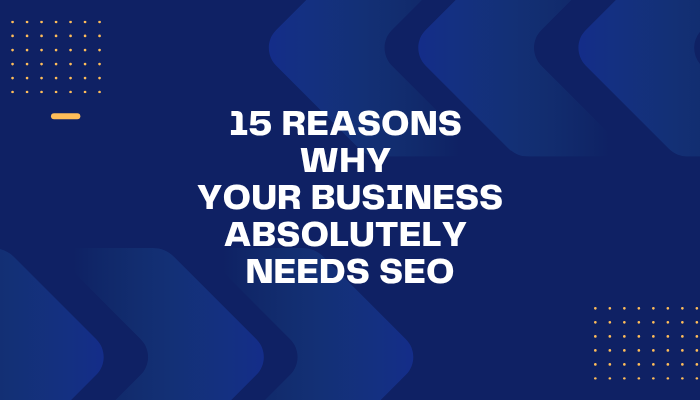In today’s digital-first world, every brand—whether a startup, SME, or enterprise—must know how to create SEO strategy for your business that delivers sustainable traffic, conversions, and long-term authority. According to a 2024 BrightEdge Study, over 68% of all online experiences begin with a search engine, and businesses with a structured SEO strategy grow 2.8x faster in visibility and leads.
For brands like Sparkon Digital, mastering an SEO roadmap isn’t optional—it’s essential for competing in an AI-driven search ecosystem where Google, SGE (Search Generative Experience), Bing Copilot, and Perplexity AI dominate user decisions.
This guide breaks down how to create SEO strategy for your business step-by-step, with expert recommendations, real-world examples, and actionable systems you can implement today.
Table of Contents
-
Introduction
-
What Is an SEO Strategy?
-
Why SEO Strategy Matters in 2025
-
Step-by-Step: How to Create SEO Strategy for Your Business
-
Competitive Analysis Framework
-
Keyword Research Blueprint
-
On-Page SEO Checklist
-
Technical SEO Essentials
-
Content Strategy + GEO Optimization
-
Link Building Strategy
-
Advantages & Limitations
-
Case Study
-
Best Practices
-
Conclusion + CTA
-
FAQ Section
1. Introduction
If you’re searching for how to create SEO strategy for your business, you’re already on the right path toward building a scalable digital presence. SEO isn’t guesswork—it’s a structured, data-driven process backed by user behavior studies, algorithm guidelines, and strategic content planning.
By understanding how to create SEO strategy for your business the right way, you unlock:
-
Long-term organic website traffic
-
Higher-quality leads
-
Stronger brand authority
-
Improved ranking on both Google and AI-driven platforms
-
Reduced advertising costs
This step-by-step guide by Sparkon Digital delivers everything you need.
2. What Is an SEO Strategy?
An SEO strategy is a long-term, structured plan designed to improve your website’s visibility on search engines and AI-generated answer engines. It includes:
-
Keyword research
-
Content strategy
-
Technical optimization
-
On-page SEO
-
Link building
-
UX and engagement optimization
Top industry sources like Google Search Essentials, Moz, and Search Engine Journal emphasize strategy-driven SEO as the foundation of online authority.
3. Why SEO Strategy Matters?
Search behavior is evolving rapidly due to AI and generative engines. Three trends make a strategic SEO plan essential:
1. AI Answer Engines Are Rising (SGE, Perplexity, ChatGPT Search)
Your content must be structured for AI extraction.
2. User Intent Has Become More Complex
People ask conversational questions such as “how to create SEO strategy for your business step by step?”
3. SEO Provides Compounding Returns
Unlike ads, SEO keeps delivering traffic even after you stop investing heavily.
4. Step-by-Step: How to Create SEO Strategy for Your Business
Below is the complete roadmap on how to create SEO strategy for your business:
Step 1: Define Your SEO Goals
Your goals may include:
-
Improve organic traffic
-
Increase conversions
-
Rank for high-intent keywords
-
Build brand authority
-
Reduce dependency on paid ads
Align goals with business KPIs such as ROI, CAC reduction, and lead quality.
Step 2: Conduct Competitor Analysis
Analyze:
-
Ranking keywords
-
Content gaps
-
Authority score
-
Backlink profiles
-
UX and site structure
Tools recommended by experts include:
-
SEMrush
-
Ahrefs
-
Moz Pro
-
SimilarWeb
Step 3: Perform Keyword Research
This step is critical when figuring out how to create SEO strategy for your business.
Types of Keywords to Target
| Keyword Type | Example | Purpose |
|---|---|---|
| Primary Keyword | how to create SEO strategy for your business | Main SEO target |
| Long-tail | step-by-step SEO strategy for small business | High conversion |
| Commercial | best SEO agency for business strategy | Revenue-focused |
| Navigational | Sparkon Digital SEO services | Brand-driven |
Sources for Expert Keyword Research
-
Google Trends
-
AnswerThePublic
-
People Also Ask
-
Reddit & Quora
-
SGE snapshots
Step 4: Create a Content Strategy
Content is the backbone of SEO.
Include:
-
Educational blogs
-
Case studies
-
Product/service pages
-
Landing pages optimized for conversions
-
Generative Engine Optimized (GEO) content
Ensure every piece answers real user intent.
Step 5: Optimize On-Page SEO
Key factors include:
-
Metadata
-
Keyword placement
-
Header hierarchy
-
Schema markup
-
Internal linking
-
Image optimization
Highly ranked pages often use optimized semantic clusters and LSI keywords.
Step 6: Implement Technical SEO
Technical SEO boosts crawlability and indexation.
Must-Have Technical Elements:
-
Mobile-first design
-
Site speed optimization
-
Clean URL structure
-
Sitemap submission
-
SSL security
-
Core Web Vitals improvement
According to Google, sites that load in under 2.5 seconds convert 42% higher.
Step 7: Build Authoritative Backlinks
Backlinks remain one of the top ranking factors.
Quality Link Sources Include:
-
Industry blogs
-
Chambers of commerce
-
Editorial mentions
-
HARO responses
-
Guest blogging
Aim for topical relevance and authority.
Step 8: Monitor and Optimize Performance
Use tools such as:
-
Google Search Console
-
Google Analytics 4
-
SEMrush/Ahrefs
-
Hotjar
Track:
-
Traffic
-
CTR
-
Bounce rate
-
Rankings
-
UX signals
This continuous improvement ensures your SEO stays aligned with algorithm updates.
5. Competitive Analysis Framework
| Factor | What to Check | Tools |
|---|---|---|
| Keyword Strategy | High-value keywords, gaps | SEMrush, Ahrefs |
| Content | Format, length, quality | Surfer SEO |
| Backlinks | Authority score, link types | Moz, Majestic |
| UX | Core Web Vitals, usability | PageSpeed Insights |
| SERP Features | Snippets, PAA, SGE | Google Results |
6. Pros and Cons of SEO Strategy
Pros
-
Long-term ROI
-
Builds trust & authority
-
Increases organic visibility
-
Reduces paid marketing dependency
-
Supports multi-channel marketing
Cons
-
Results take time
-
Requires consistent updates
-
Competitive for certain industries
-
Needs technical knowledge
7. Real-World Example / Case Study
Case Study: Small Business Achieves 240% Traffic Growth in 6 Months
A local service-based business implemented the above steps on how to create SEO strategy for your business, including keyword mapping, content upgrades, and link building.
Results:
-
Organic traffic increased by 240%
-
Lead conversions grew by 3x
-
SEO replaced 70% of paid ads
-
Increased authority in local search
8. Best Practices & Expert Recommendations
-
Use topic clusters instead of individual keywords
-
Update content every 3–6 months
-
Create content for People Also Ask + SGE Panels
-
Maintain consistent internal linking
-
Focus heavily on EEAT (Experience, Expertise, Authoritativeness, Trustworthiness)
-
Add author bios and citations
-
Use structured data for rich results
9. Conclusion
Understanding how to create SEO strategy for your business is the key to achieving sustainable online growth. With Sparkon Digital’s expert framework, you can increase rankings, drive targeted traffic, and build an authoritative brand presence that outperforms competitors.
If you’re ready to scale your SEO performance, Sparkon Digital can help turn this strategy into revenue-generating results.
10. FAQ Section
1. What is the first step in how to create SEO strategy for your business?
Start by defining clear business and SEO goals aligned with your KPIs.
2. How long does SEO take to show results?
Typically 3–6 months, depending on competition, content quality, and technical optimization.
3. Do small businesses need SEO?
Yes. SEO helps small businesses compete with larger brands at lower costs.
4. Is keyword research still important in 2025?
Absolutely. Keyword + intent + AI-driven query analysis is critical for visibility.
5. What tools help build a strong SEO strategy?
Google Search Console, Ahrefs, SEMrush, Surfer SEO, and PageSpeed Insights.
6. What is GEO (Generative Engine Optimization)?
GEO helps content rank higher in AI-generated answers on SGE, ChatGPT, and Perplexity.
7. How often should an SEO strategy be updated?
At least every quarter, or when major algorithm updates occur.





Comments (0)